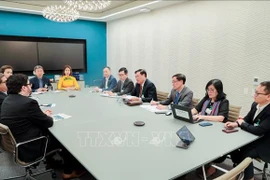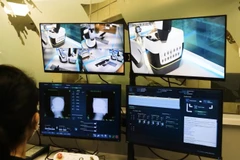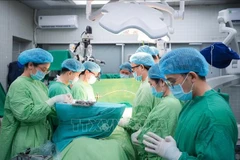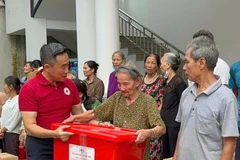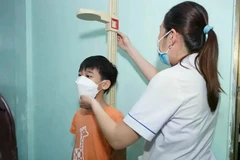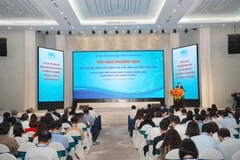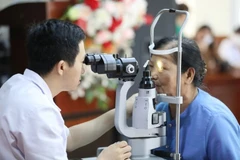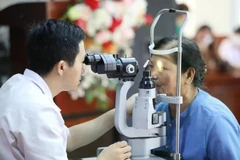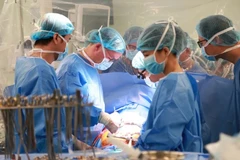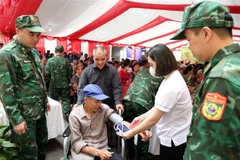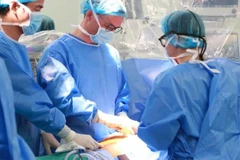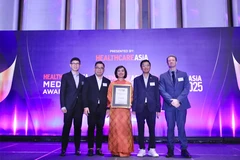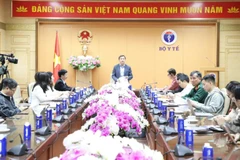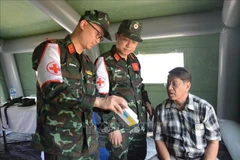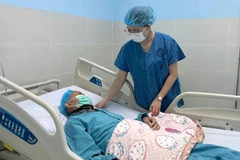Hanoi (VNA) – It can be said that the COVID-19 pandemic has been brought under control in Vietnam thanks to efforts by the entire political system and people, and particularly vaccine diplomacy.
Vaccine diplomacy has contributed to successes of Vietnam’s vaccine strategy, which also includes vaccine fund and vaccination.
Amid the pandemic outbreak and vaccine scarcity, the Vietnamese Party and State mobilised both macro and micro resources, and drastically instructed the diplomatic sector to utilise channels to access vaccine sources.
Vaccine was an important content of phone talks and international meetings of Party and State leaders.
The government vaccine taskforce on vaccine diplomacy was established on August 13, 2021, which was headed by the Minister of Foreign Affairs, aiming to accelerate vaccine delivery, call for vaccine support from bilateral partners and international organisations, and promote technical transfer.
The Ministry of Health (MoH) also encouraged localities, organisations and businesses to purchase vaccines. The ministry was in charge of licensing and monitoring the quality of vaccines, and launching the free-of-charge vaccination campaign.
In May 2021, Vietnam received the first batch of COVID-19 vaccines under the COVAX Facility - mechanism set up by the World Health Organization (WHO), the Global Alliance for Vaccine and Immunisation (GAVI), the United Nations Children’s Fund (UNICEF), the Coalition for Epidemic Preparedness Innovations (CEPI), and manufacturers and partners to accelerate the development and manufacture of COVID-19 vaccines, and to guarantee fair and equitable access for every country in the world.
As of October 2021, the country got some 97.5 million doses of vaccines, the MoH said, adding that the amount was 206 million doses at the end of June 2022, of which more than 51 million doses came under the COVAX Facility.
More than 146 million doses had been administered as of December 27, 2021, making Vietnam rank 52rd among the 63 countries and territories that covered two doses of COVID-19 vaccine for at least 70% of their populations.
Vietnam also became one of the countries worldwide with the highest COVID-19 vaccination coverage as up to 266,416,100 doses administered as of May 31, 2023, basically achieving the target of herd immunity earlier than scheduled.
Meanwhile, in the first phase of the pandemic, Vietnam supported other countries like Laos, Cambodia, Indonesia, Myanmar, China, Australia, Brunei, India, Indonesia, Malaysia, the Philippines, Singapore and Thailand in financing and medical equipment. The country also gave aid to France, Germany, Italy, Spain, the UK, Mexico, Russia, Japan, the US and Sweden, among others, during the pandemic combat.
Besides, Vietnam contributed 100,000 USD to the ASEAN COVID-19 Response Fund and 5 million USD to the ASEAN Regional Reserve of Medical Supplies.
High-ranking Vietnamese Party and State leaders made phone calls and sent letters to leaders of 22 countries and 10 international organisations, met with foreign ambassadors and representatives of foreign firms in Vietnam, and visited European nations, Cuba, the US, Japan, Russia, the Republic of Korea and India to sign vaccine production technology procurement and transfer contracts, and mobilise vaccine support.
The success of vaccine diplomacy not only contributes to strengthening soft power, affirming the national image and the pioneering role of the diplomatic sector but also provides valuable experience for Vietnam in diplomatic mobilisation and the implementation of economic diplomacy and export diplomacy in the current challenging global economic context./.



